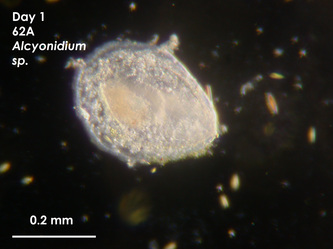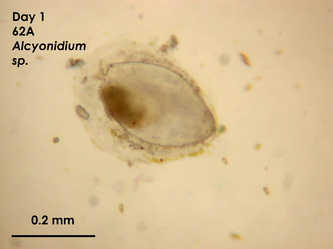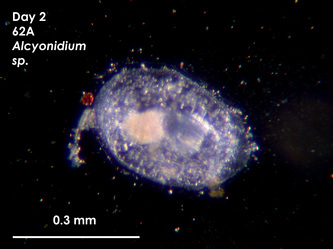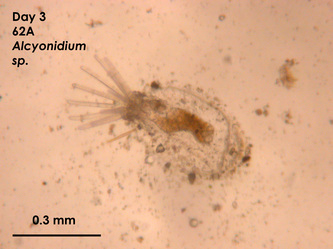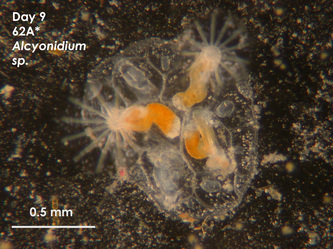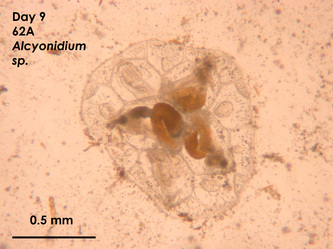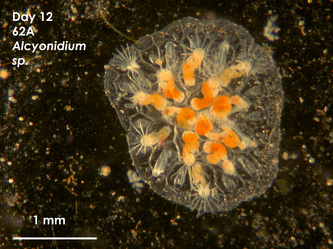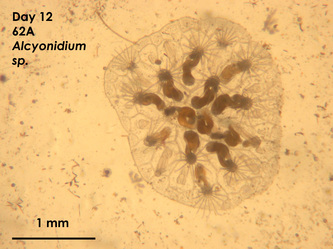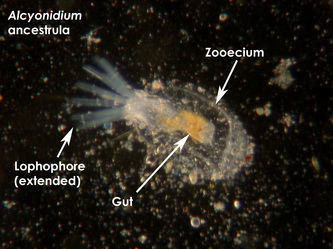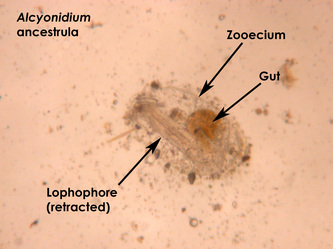Alcyonidium sp.
The zooecium (body covering) of this encrusting bryozoan is translucent, allowing the observer to see structures within the animal. By the third or fourth day of observation, the lophophore has developed and can be seen while retracted or extended. The organism covers the substrate by expanding along the surface of the material, creating new zooids (individuals) that each develop their own lophophore and digestive tract. Unlike other bryozoans of similar appearance, the zooecium of Alcyonidium species is flexible- it deforms but does not crack if poked gently. After the first ten days of growth, the colony is easily visible to the naked eye, and very beautiful under the microscope.
Anatomy of Alcyonidium
Ancestrula- the zooid which arises from the larva after settlement; the original zooid before asexual reproduction begins
Zooecium- the encasing material which houses the body of the zooid
Lophophore- a ring of ciliated tentacles surrounding the mouth used for feeding; may be extended or retracted
Zooecium- the encasing material which houses the body of the zooid
Lophophore- a ring of ciliated tentacles surrounding the mouth used for feeding; may be extended or retracted
